Growing your own vegetables has become one of 2025's most rewarding trends, combining sustainability with fresh, flavorful produce right at your fingertips. Whether you have sprawling acres or just a small balcony, vegetable gardening offers endless possibilities to create productive, beautiful spaces. From innovative vertical systems to charming themed gardens, modern vegetable growing embraces both traditional methods and cutting-edge techniques. These ideas transform any space into a thriving food garden, maximizing yields while minimizing environmental impact. Each approach offers unique benefits, from space efficiency to aesthetic appeal, making homegrown vegetables accessible to every gardener regardless of experience level.

1. Raised Bed Square Foot Garden Layout
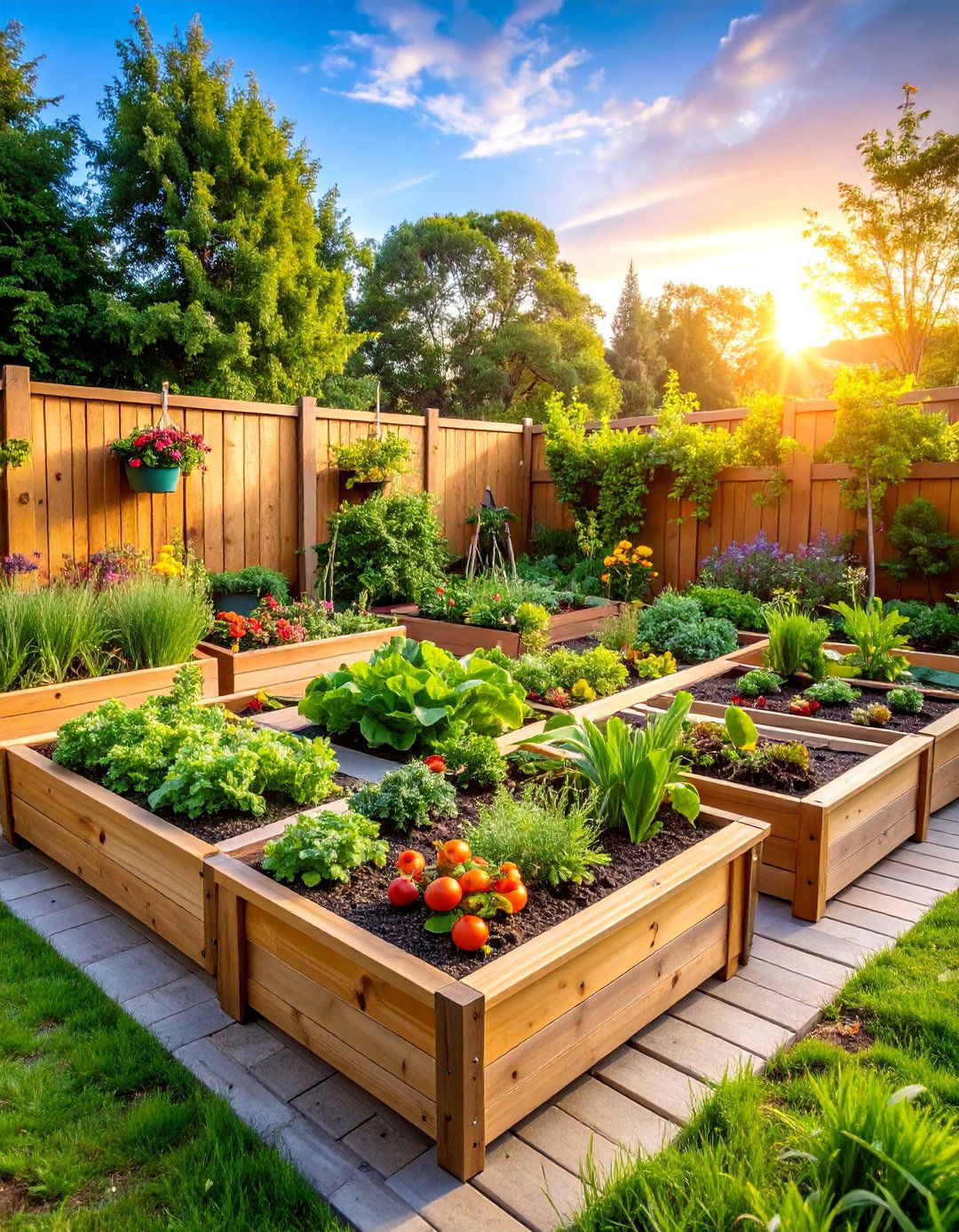
Square foot gardening revolutionizes traditional vegetable growing by dividing raised beds into precise one-foot squares, maximizing productivity in minimal space. This systematic approach allows intensive planting while maintaining easy access for maintenance and harvesting. Each square accommodates different vegetables based on mature size, from sixteen radishes in one square to a single tomato plant in another. The raised structure improves drainage, soil quality, and extends growing seasons while reducing weeding and watering needs. Grid systems create visual organization, making crop rotation simple and succession planting straightforward. This method proves perfect for beginners seeking structured guidance while experienced gardeners appreciate its efficiency and impressive yields per square foot.
2. Container Patio Vegetable Garden
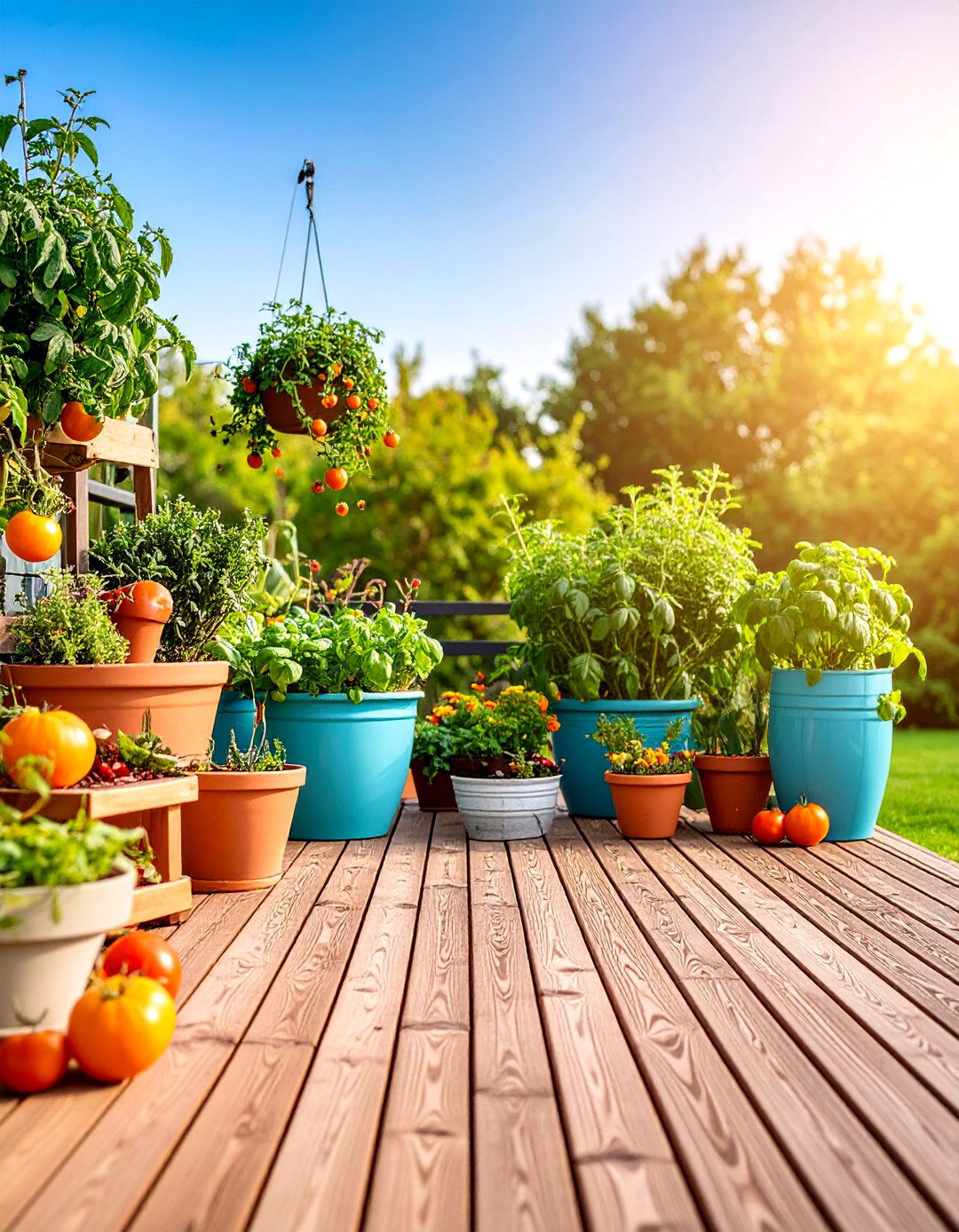
Transform any patio, deck, or balcony into a productive vegetable haven using containers of varying sizes and heights. This flexible approach accommodates apartment living and rental situations while offering complete control over soil quality and plant placement. Large containers house tomatoes and peppers, medium pots support herbs and leafy greens, while hanging baskets showcase trailing varieties like cherry tomatoes and strawberries. Strategic arrangement creates visual interest through layered heights and diverse textures. Container mobility allows optimal sun exposure adjustment throughout seasons while protecting plants from harsh weather. Drip irrigation systems simplify watering, while decorative planters blend functionality with aesthetic appeal, creating an attractive outdoor living space.
3. Vertical Tower Garden System

Aeroponic tower systems maximize growing space by stacking plants vertically, producing impressive yields in minimal footprint areas. These soil-free systems circulate nutrient-rich water through plant roots, promoting faster growth and higher productivity than traditional methods. Multiple tiers accommodate various vegetables simultaneously, from leafy greens and herbs to peppers and strawberries. Automated watering reduces maintenance while conserving water through recirculation systems. Tower gardens suit urban environments perfectly, fitting on patios, balconies, or indoor spaces with adequate lighting. Year-round growing capabilities extend harvest seasons significantly. Modern tower designs blend technology with sustainability, offering clean, efficient food production while creating striking architectural elements in outdoor spaces.
4. Pizza Garden Theme Layout
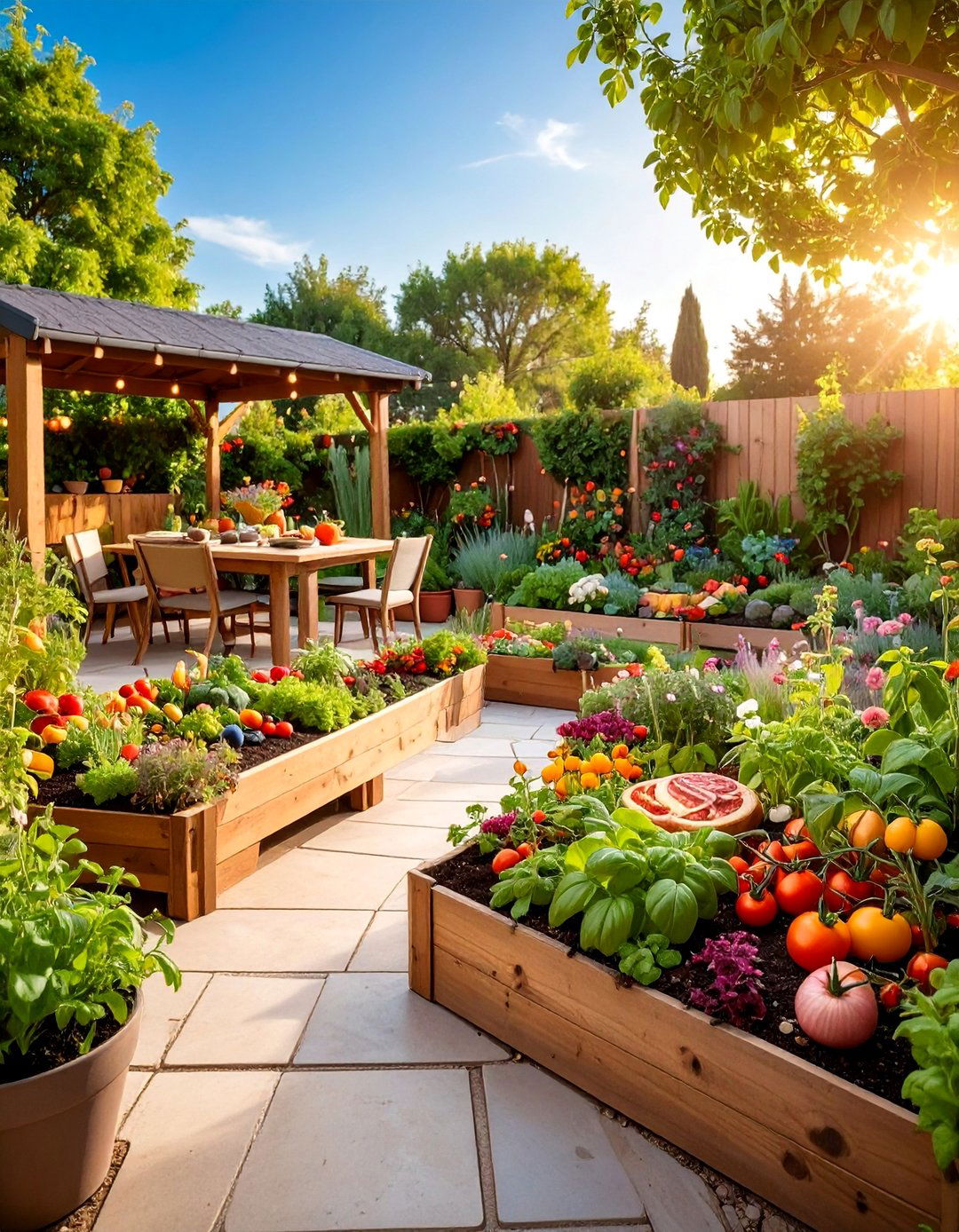
Dedicate garden space to growing fresh pizza ingredients, creating an interactive culinary experience from soil to table. This themed approach includes multiple tomato varieties for diverse sauce options, aromatic herbs like basil, oregano, and rosemary, plus vegetables such as peppers, onions, and garlic. Compact design accommodates small spaces while providing sufficient ingredients for regular pizza nights. Raised beds or large containers organize different ingredient groups systematically. Succession planting ensures continuous harvests throughout growing seasons. This engaging concept encourages family participation in gardening while connecting food production to favorite meals. Children particularly enjoy watching pizza ingredients develop, making gardening educational and exciting while building appreciation for fresh, homegrown flavors.
5. Salad Bar Garden Design
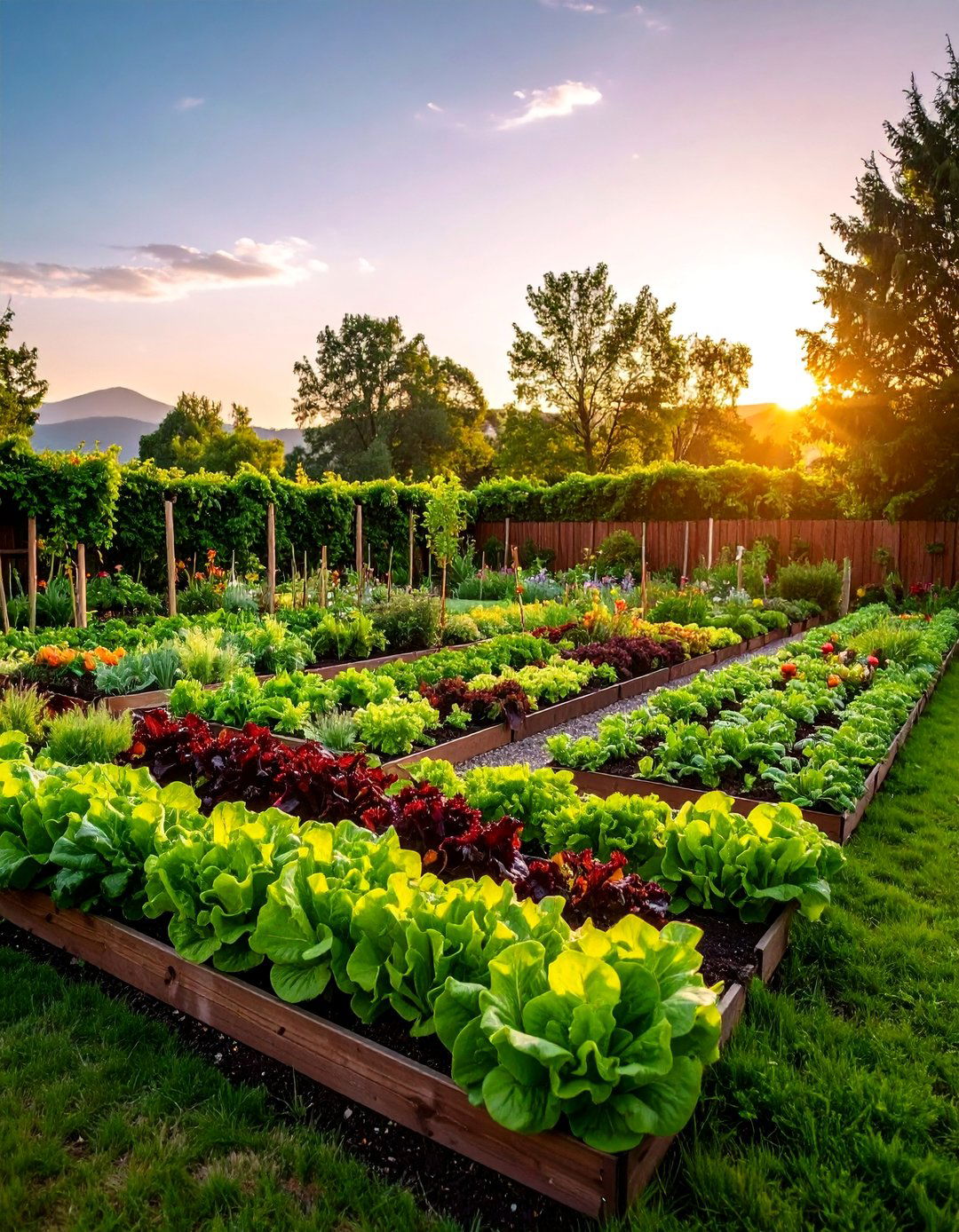
Create a continuous supply of fresh salad ingredients through strategic plantings of diverse lettuce varieties, leafy greens, herbs, and colorful vegetables. This cut-and-come-again approach ensures regular harvests while maintaining productive plants throughout seasons. Include multiple lettuce types, spinach, arugula, kale, and Swiss chard alongside cherry tomatoes, cucumbers, carrots, and radishes. Succession planting every two weeks maintains constant availability of tender, fresh greens. Compact spacing maximizes yields while intercropping herbs adds flavor complexity and pest deterrent benefits. Cold frames or row covers extend growing seasons significantly. This approach reduces grocery expenses while providing restaurant-quality salads daily, encouraging healthier eating habits through convenient access to fresh, nutritious ingredients.
6. Compact Balcony Container Garden
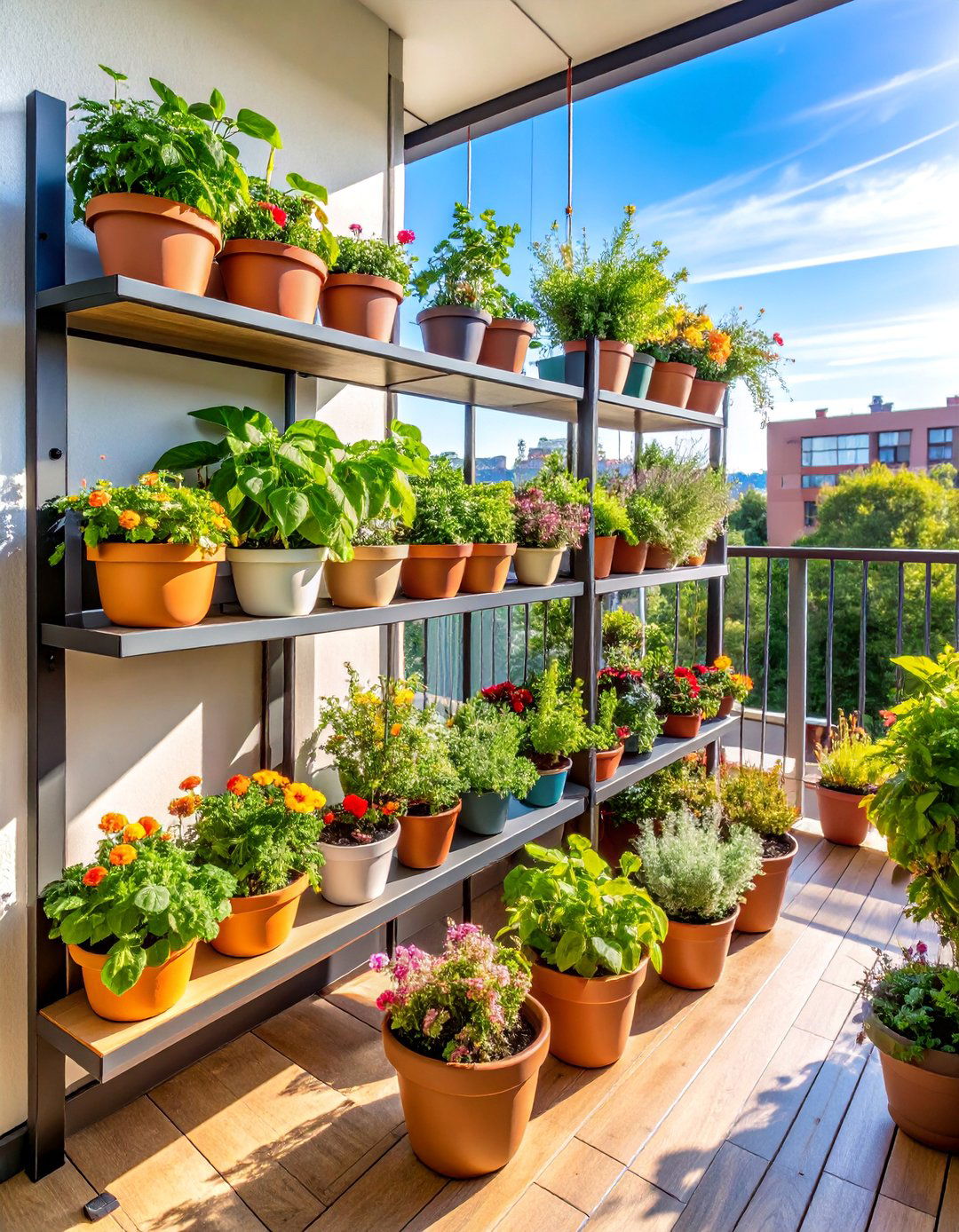
Maximize limited balcony space through clever container selection and vertical growing techniques, proving that productive vegetable gardens require minimal square footage. Utilize railings for hanging planters, walls for mounted containers, and tiered plant stands to create multiple growing levels. Choose dwarf vegetable varieties specifically bred for container culture, ensuring proper sizing and productivity. Window boxes accommodate herbs and leafy greens while larger containers support fruiting plants like compact tomatoes and peppers. Lightweight containers enable easy rearrangement for optimal sun exposure while rolling bases facilitate seasonal repositioning. Strategic companion planting maximizes space efficiency while decorative containers maintain aesthetic appeal. This approach demonstrates that urban gardening limitations become creative opportunities for innovative solutions.
7. Four-Season Succession Planting Garden
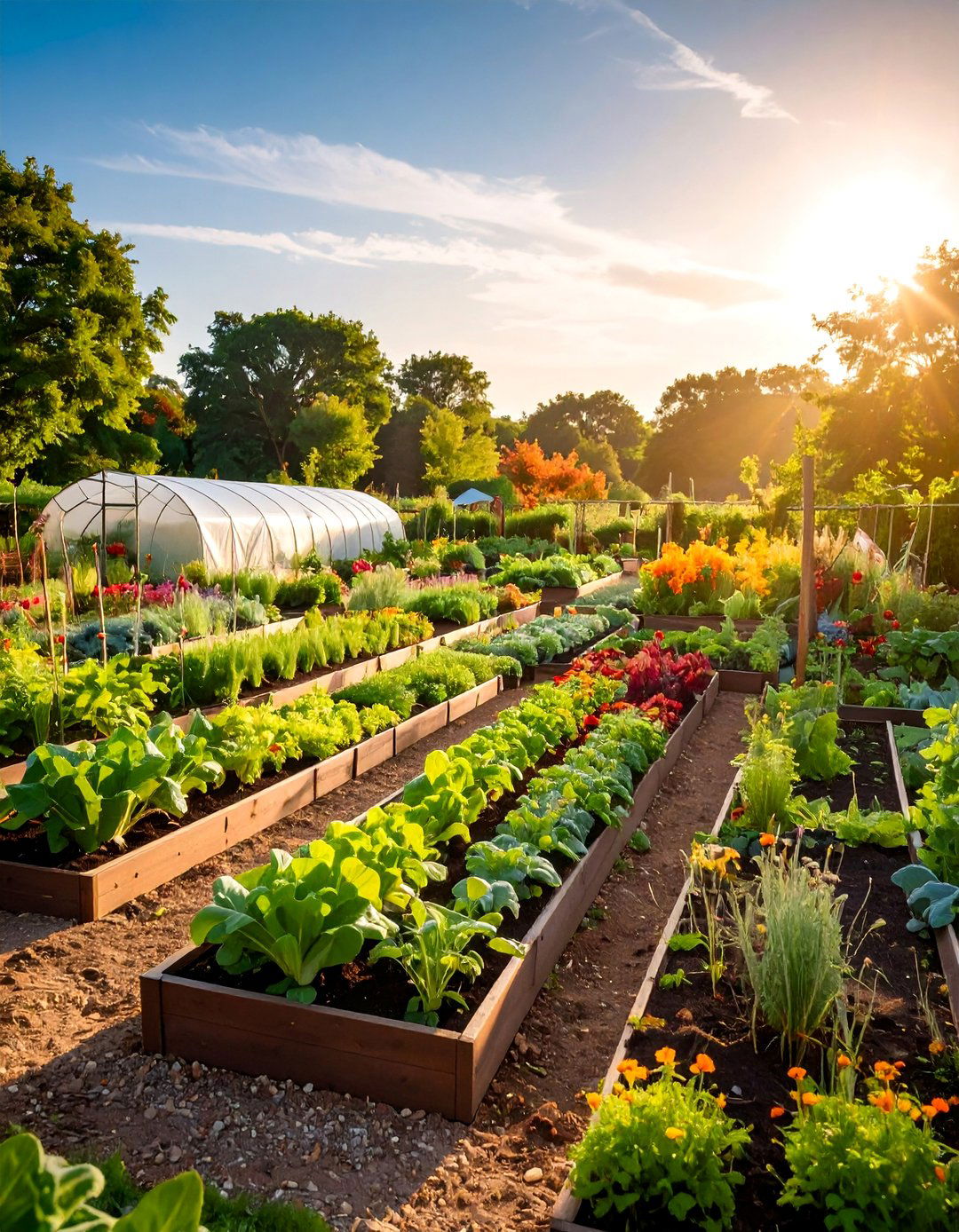
Design gardens for continuous harvests through strategic succession planting and seasonal crop rotation, ensuring year-round fresh produce availability. Plan cold-hardy vegetables for early spring and late fall growing, heat-tolerant varieties for summer production, and protected growing for winter harvests. Stagger plantings every 2-3 weeks to maintain steady supplies of fast-maturing crops like lettuce, radishes, and beans. Utilize row covers, cold frames, and season extenders to maximize growing periods. Crop rotation prevents soil depletion while reducing pest and disease issues. This systematic approach requires careful planning but rewards gardeners with constant harvests, reduced waste, and optimal garden productivity. Advanced timing creates seamless transitions between seasonal plantings.
8. Hydroponic Vertical Wall Garden
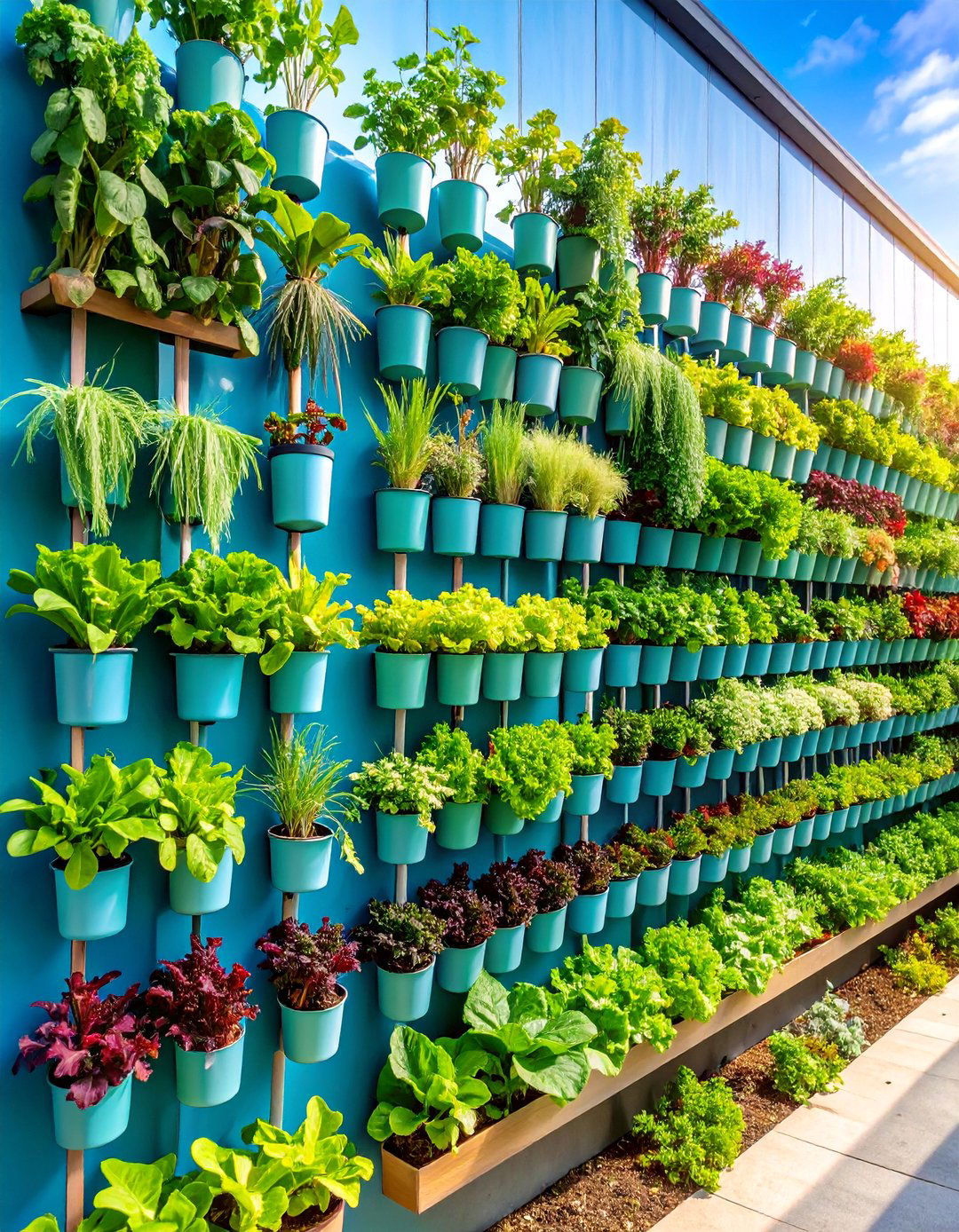
Install sophisticated soilless growing systems against walls or fences, creating living walls of productive vegetables using nutrient-rich water solutions. These systems maximize vertical space while providing precise environmental control for optimal plant growth. Automated irrigation delivers balanced nutrients directly to root systems, promoting faster development and higher yields than soil-based methods. Multiple tiers accommodate diverse crops simultaneously while maintaining easy access for maintenance and harvesting. LED lighting supplements natural light for indoor installations, enabling year-round production regardless of outdoor conditions. Modern hydroponic systems offer smartphone monitoring and control capabilities, making advanced growing techniques accessible to home gardeners seeking cutting-edge food production methods with minimal space requirements.
9. Herb Spiral Garden Design
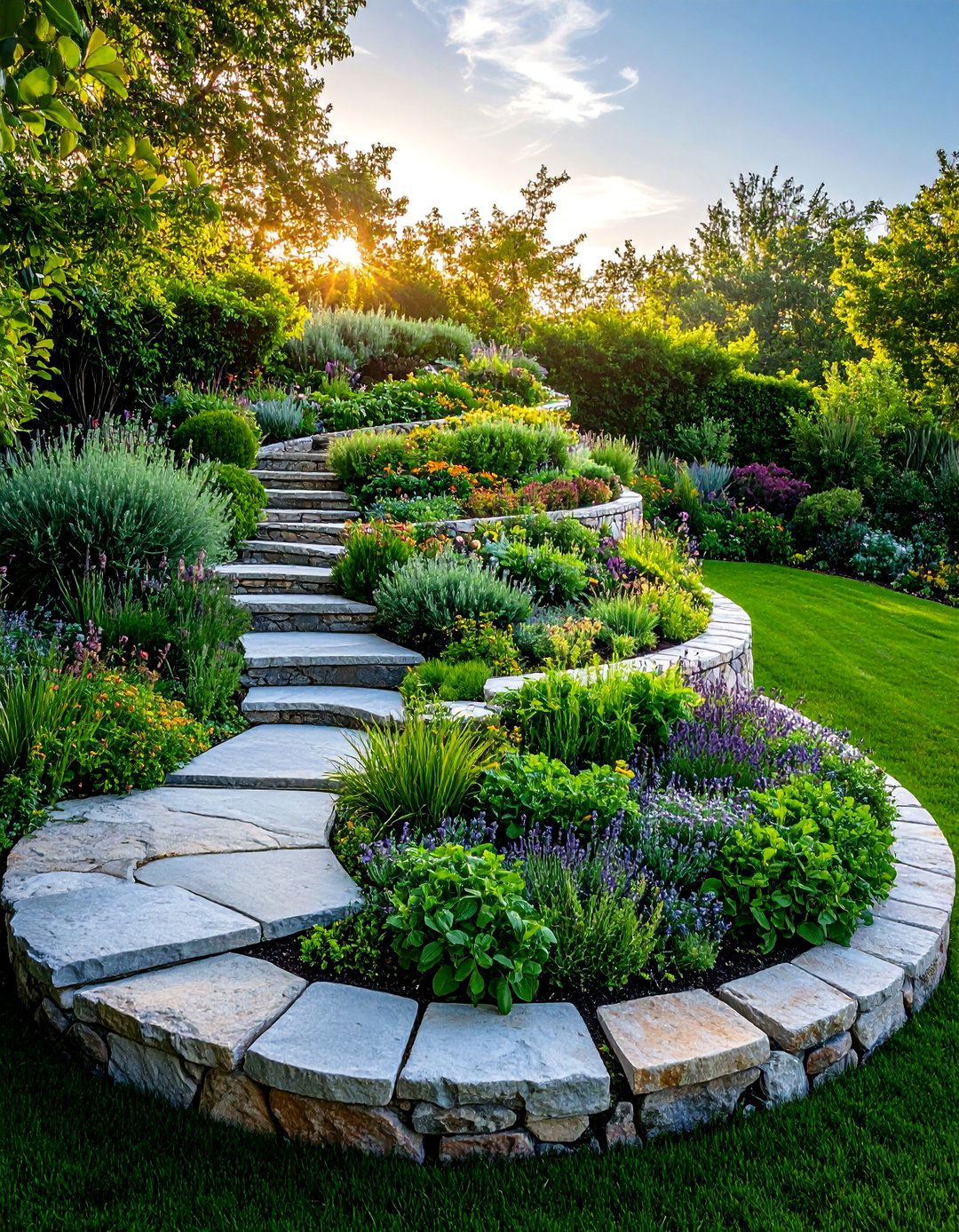
Construct ascending spiral gardens that create diverse microclimates for various herbs while maximizing growing space in compact areas. This permaculture technique positions water-loving herbs at the bottom, drought-tolerant varieties at elevated positions, and sun-loving species on south-facing slopes. The three-dimensional design increases planting surface area significantly while providing excellent drainage through gravitational water flow. Natural stone or recycled materials create attractive, functional structures that blend seamlessly with landscape designs. Central access paths enable easy harvesting while the spiral configuration creates windbreaks and sun protection for sensitive plants. This design demonstrates ecological principles while providing fresh culinary herbs year-round, combining sustainability with practical functionality and visual appeal.
10. Salsa Garden Theme Layout

Grow fresh salsa ingredients in designated garden sections, providing authentic flavors for homemade salsas and Mexican cuisine. Include multiple tomato varieties from cherry to paste types, various peppers ranging from mild to fiery hot, cilantro, onions, garlic, and tomatillos for verde preparations. Companion planting enhances growth while natural pest management reduces chemical inputs. Large containers accommodate plants requiring different soil conditions while maintaining organized ingredient groups. Succession planting ensures continuous harvests for peak salsa-making seasons. This themed approach creates cultural connections through food while encouraging experimentation with heat levels and flavor combinations. Fresh ingredients provide superior taste compared to store-bought alternatives while controlling sodium and preservative content.
11. Traditional Row Garden with Companion Planting
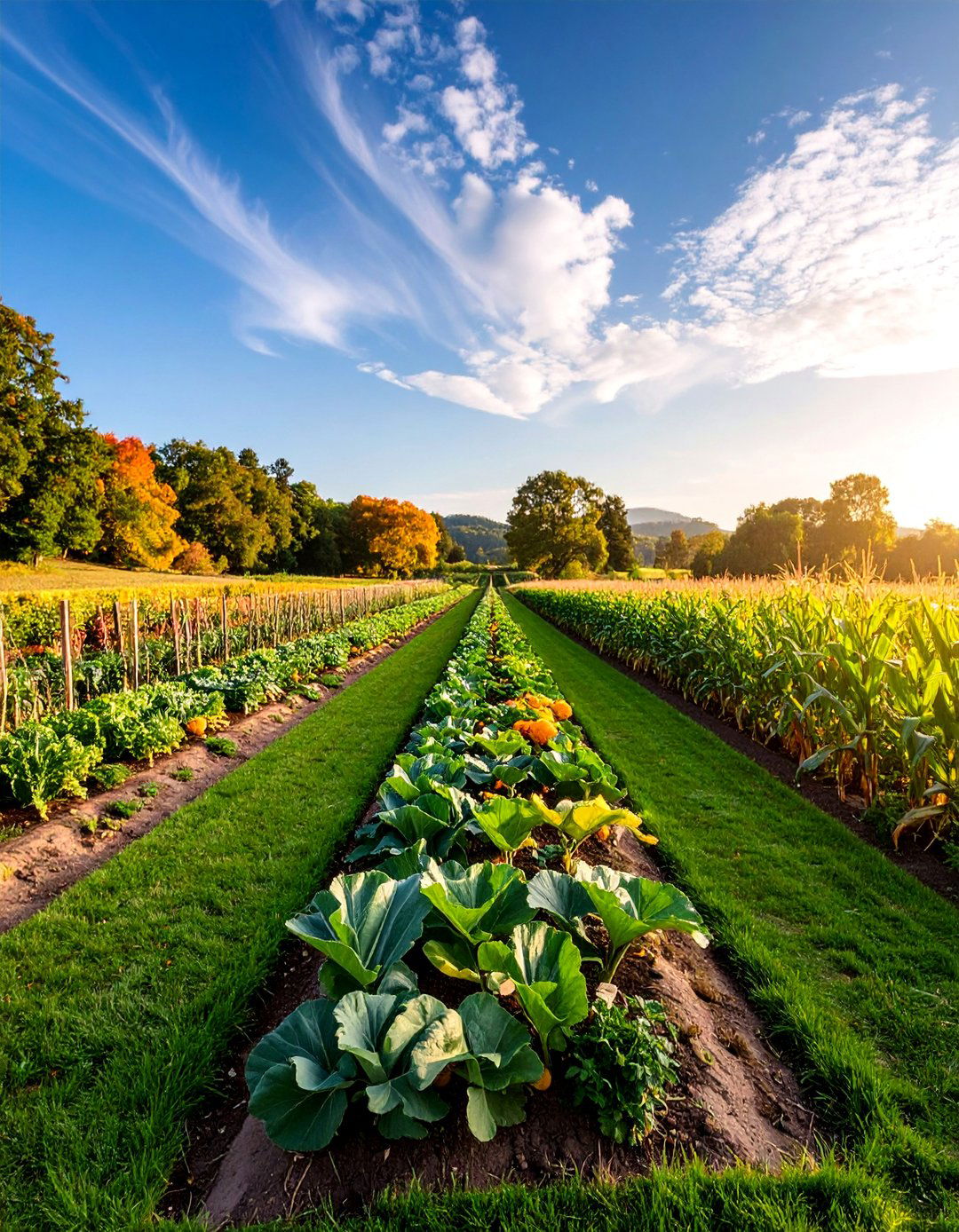
Establish classic straight-row gardens enhanced by strategic companion planting relationships that improve plant health, yields, and natural pest management. Plant corn, beans, and squash together in traditional "Three Sisters" configurations while positioning basil near tomatoes for improved flavor and pest deterrence. Design pathways between rows for easy access and maintenance while maintaining proper spacing for mature plant sizes. Include beneficial flower strips to attract pollinators and beneficial insects throughout growing areas. Crop rotation prevents soil nutrient depletion while intercropping maximizes space utilization. This time-tested approach combines traditional wisdom with modern understanding of plant relationships, creating productive gardens that work harmoniously with natural systems while maintaining organized, manageable layouts.
12. Hanging Basket Vegetable Garden
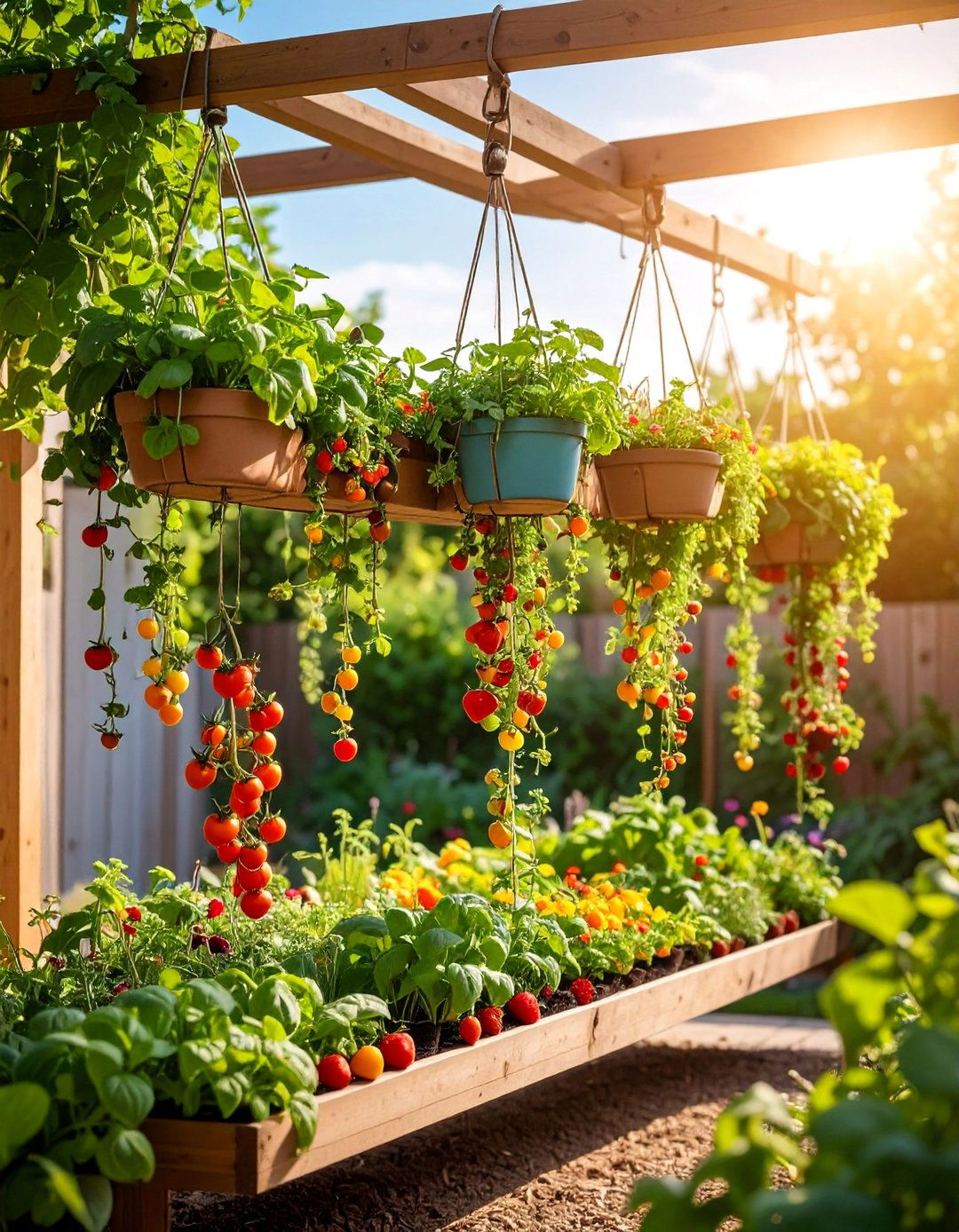
Utilize vertical space through hanging baskets and suspended planters, creating productive gardens in unexpected locations while adding visual interest to outdoor spaces. Cherry tomatoes, trailing strawberries, herbs, and compact pepper varieties thrive in suspended containers while creating attractive cascading displays. Position baskets at varying heights for optimal sun exposure and easy harvesting access. Lightweight potting mixes reduce weight while maintaining proper drainage and nutrition. Automatic watering systems or self-watering containers reduce maintenance requirements significantly. This approach suits rental properties perfectly since installations require minimal permanent modifications. Hanging gardens also deter ground pests while improving air circulation around plants, reducing disease issues while creating unique garden features that maximize growing space creatively.
13. Window Box Kitchen Garden
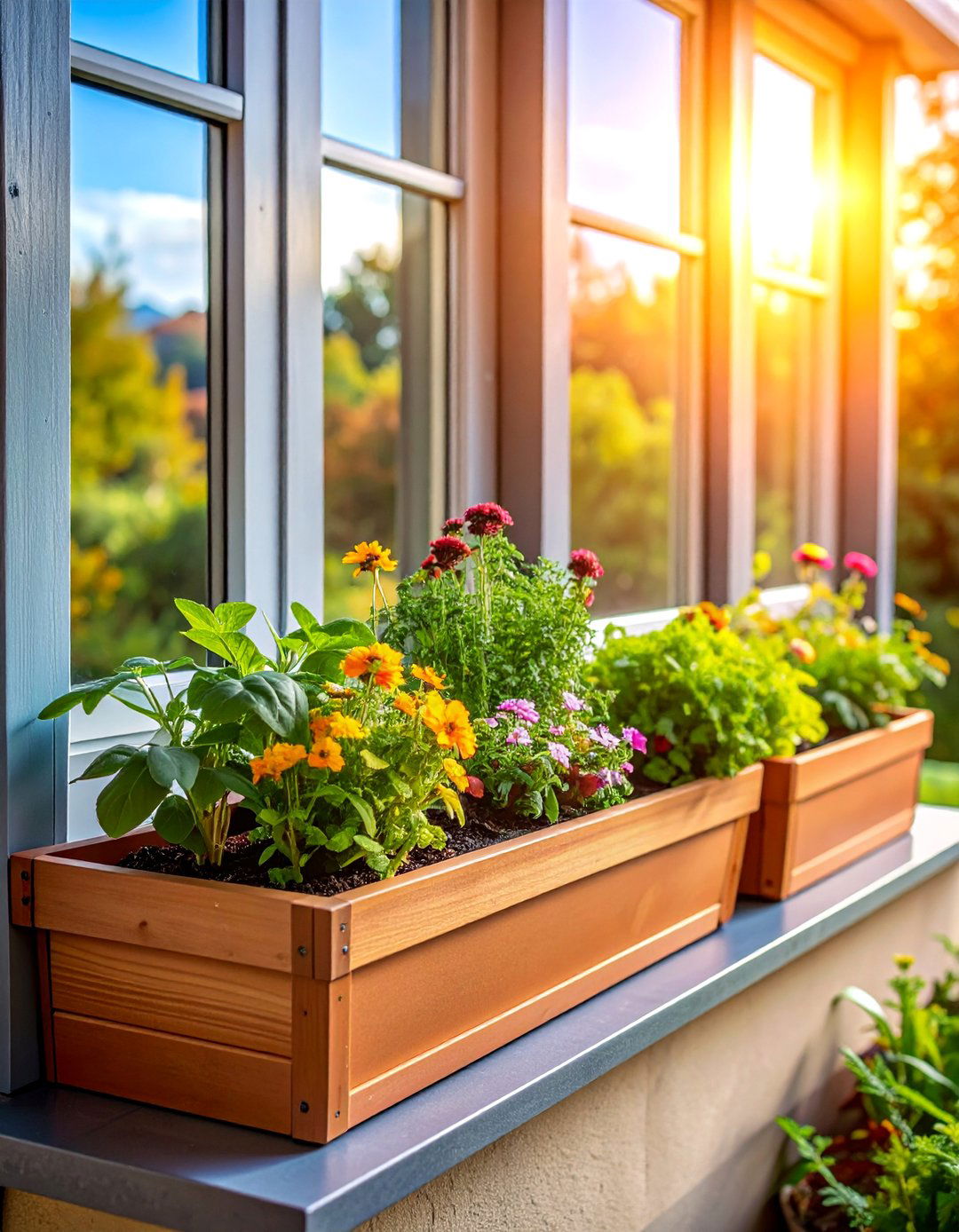
Install window boxes directly outside kitchen windows for immediate access to fresh culinary herbs and compact vegetables during cooking preparation. These convenient gardens provide instant ingredients while adding attractive greenery to home exteriors. Herbs like basil, parsley, chives, and oregano thrive in shallow containers while compact vegetables such as lettuce, radishes, and cherry tomatoes add diversity. Self-watering systems maintain consistent moisture while proper drainage prevents root rot issues. Seasonal plantings provide year-round interest through cold-hardy herbs in winter and heat-tolerant varieties during summer months. This accessible approach encourages regular harvesting and use while connecting cooking activities directly to growing processes, making fresh ingredients convenient and inspiring creative culinary applications.
14. Keyhole Permaculture Garden
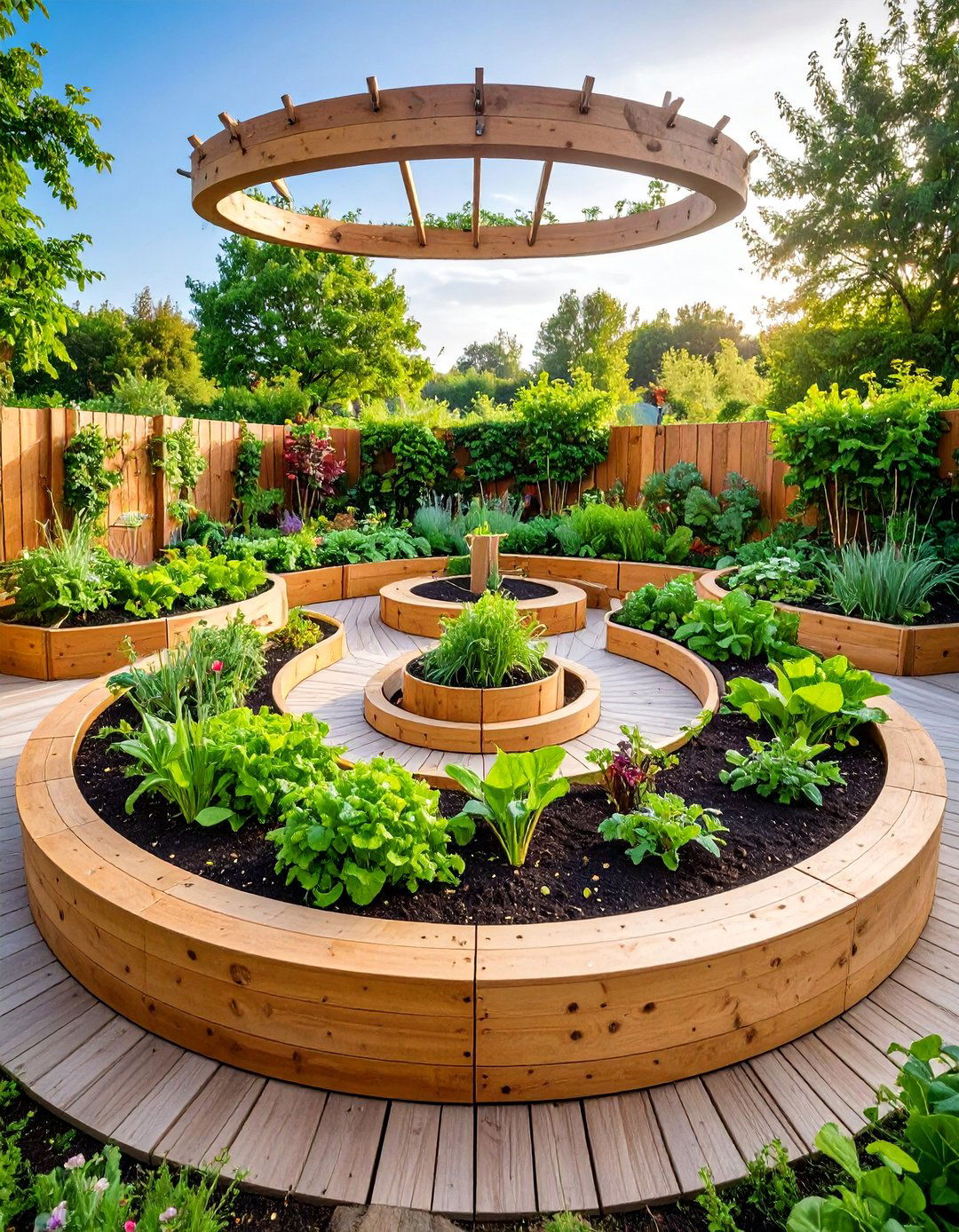
Construct circular raised beds with central composting areas, creating self-feeding garden systems that recycle organic waste while providing nutrients for surrounding vegetables. This sustainable design positions plants according to water and nutrient requirements, with heavy feeders near compost centers and drought-tolerant varieties toward outer edges. The keyhole entry provides access to all areas without soil compaction while the central basket accepts kitchen scraps throughout growing seasons. Natural decomposition provides continuous nutrition while maintaining soil health through organic matter incorporation. This permaculture technique demonstrates closed-loop systems while maximizing productivity in compact areas. Water efficiency improves through mulching and companion planting while waste reduction supports environmental sustainability goals through organic recycling practices.
15. Greenhouse Extension Garden
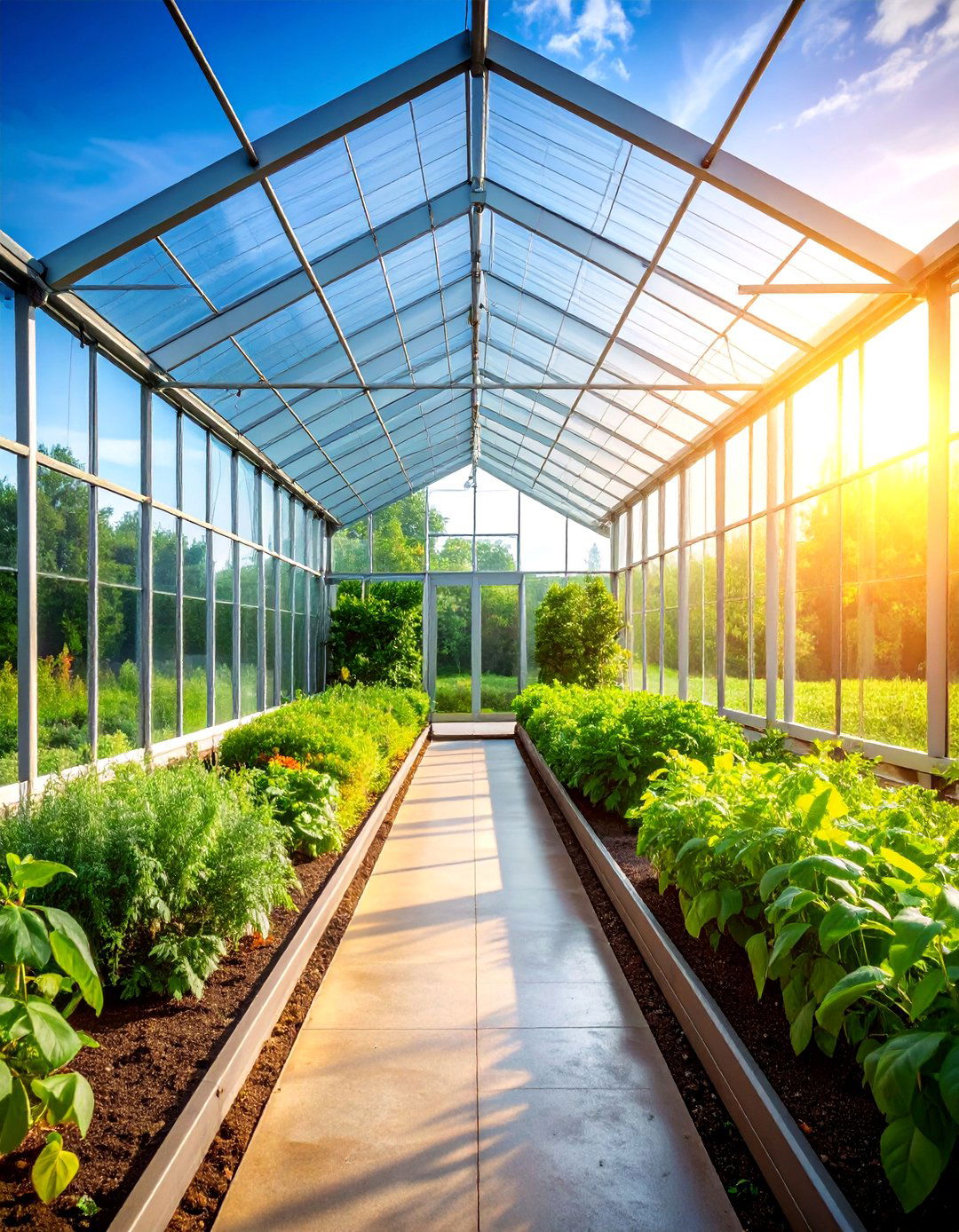
Extend growing seasons dramatically through greenhouse or hoop house installations that protect vegetables from weather extremes while maintaining optimal growing conditions. These structures enable early spring planting, summer heat protection, and late fall harvests while providing year-round growing capabilities in cold climates. Automated ventilation systems maintain proper temperatures while thermal mass materials regulate daily temperature fluctuations. Integrated rainwater collection systems provide sustainable irrigation while solar-powered fans ensure adequate air circulation. Season extenders accommodate both warm and cool-season crops simultaneously through strategic zoning. This approach maximizes garden productivity while reducing dependence on commercial produce during off-seasons, providing fresh vegetables regardless of outdoor weather conditions while creating controlled environments for optimal plant development.
16. Rain Garden with Edible Plants
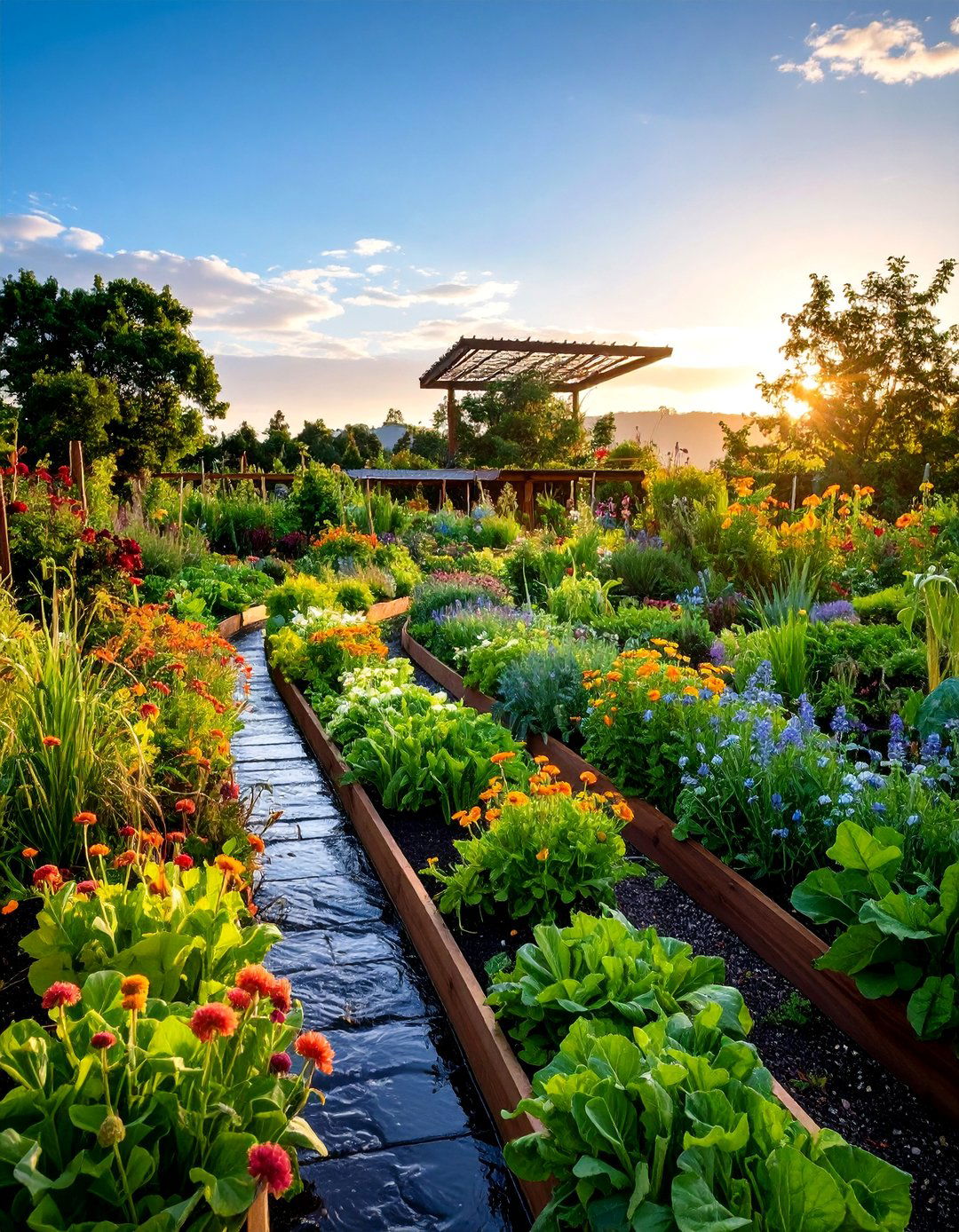
Design depression gardens that capture and filter stormwater runoff while producing edible plants adapted to moisture variations and sustainable water management. Select vegetables and herbs tolerant of both wet and dry conditions, such as watercress, marsh mallow, elderberry, and native edible plants. These gardens reduce property flooding while improving water quality through natural filtration systems. Swales and berms direct water flow while mulching maintains soil moisture during dry periods. This ecological approach demonstrates environmental stewardship while providing unique edible varieties rarely found in traditional gardens. Native plant integration supports local wildlife while reducing maintenance requirements significantly. Rain gardens combine practical water management with food production, creating beautiful, functional landscapes that address environmental challenges while yielding edible harvests.
17. Three Sisters Companion Garden

Recreate traditional Indigenous agricultural practices by planting corn, beans, and squash together in mutually beneficial relationships that improve soil health and maximize yields. Corn provides natural trellises for climbing beans while beans fix nitrogen for heavy-feeding corn and squash. Large squash leaves shade soil, retaining moisture while deterring weeds and pests through natural ground cover. This sustainable system requires minimal external inputs while demonstrating ecological wisdom through plant partnerships. Succession planting ensures continuous harvests while crop rotation maintains soil fertility naturally. Modern adaptations include dwarf varieties for smaller spaces while maintaining beneficial relationships. This approach honors traditional knowledge while providing diverse harvests from compact growing areas, creating productive gardens that work harmoniously with natural systems.
18. Cutting Garden with Edible Flowers

Combine beautiful flowers with vegetable production by incorporating edible blooms that serve dual purposes as garden decoration and culinary ingredients. Plant nasturtiums, calendula, violas, and sunflowers alongside traditional vegetables to create visually stunning gardens that provide unique ingredients for gourmet cooking. These flowers attract beneficial insects while deterring harmful pests through natural companion planting relationships. Cut flowers extend indoor enjoyment while edible petals add color and flavor to salads, desserts, and beverages. This approach demonstrates that productive gardens can be aesthetically pleasing while providing diverse harvests beyond traditional vegetables. Succession planting ensures continuous blooms throughout growing seasons while attracting pollinators essential for fruiting vegetable production, creating beautiful, functional gardens that support both human needs and ecological health.
19. Potager French Kitchen Garden
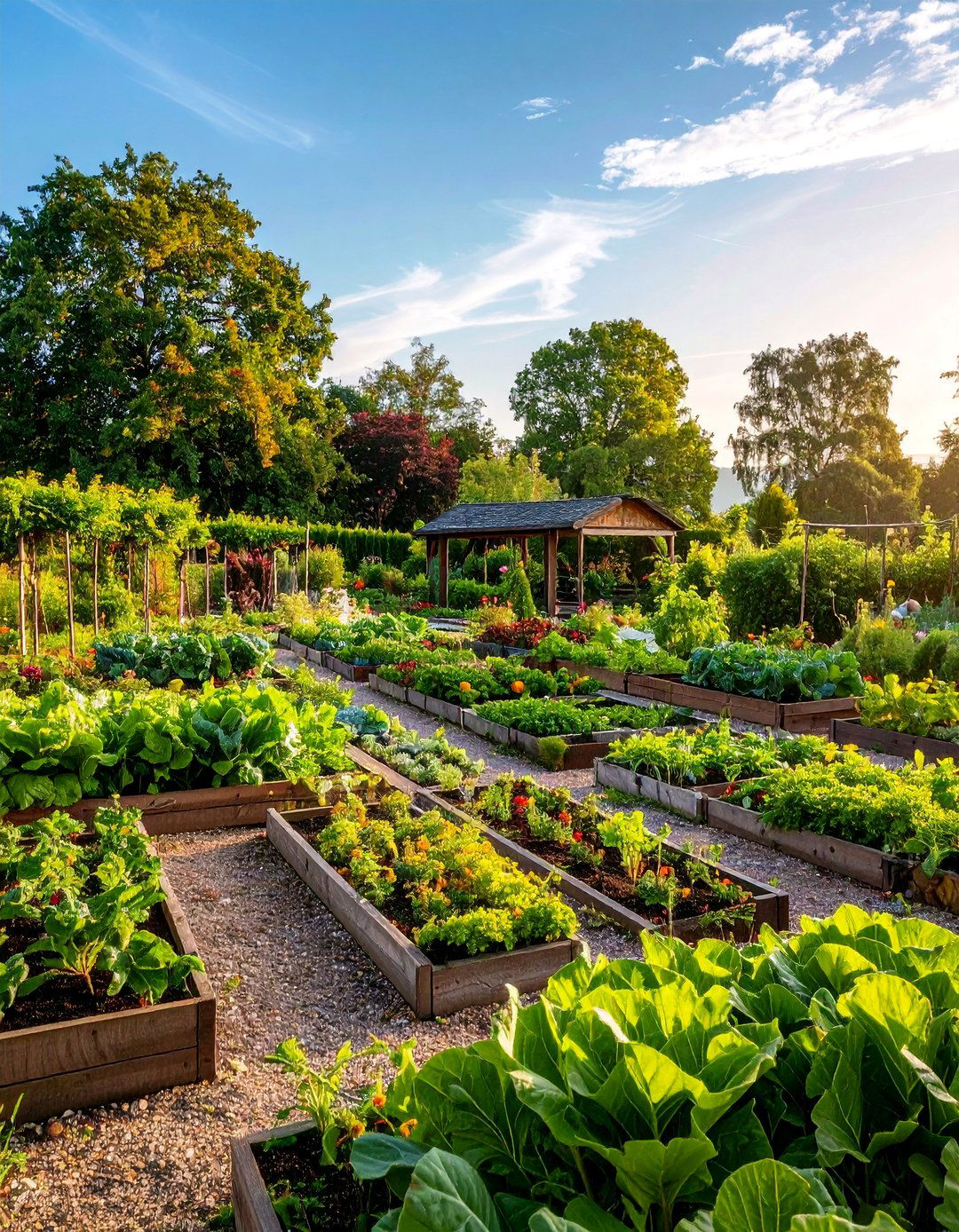
Create formal decorative vegetable gardens that blend ornamental beauty with productive function through organized geometric patterns and aesthetic plant combinations. This traditional French approach integrates vegetables, herbs, and flowers in visually pleasing arrangements that provide year-round garden interest. Formal pathways create structured access while seasonal plantings maintain continuous color and texture variations. Dwarf boxwood or lavender hedging defines planting areas while trellises support climbing vegetables and add vertical interest. This elegant approach demonstrates that vegetable gardens can serve as landscape focal points while providing fresh ingredients for gourmet cooking. Careful plant selection ensures productive harvests while maintaining decorative appeal throughout growing seasons, creating gardens that satisfy both practical and aesthetic desires through thoughtful design integration.
20. Strawbale Vegetable Garden

Utilize straw bales as both growing medium and containers, creating instant raised beds that decompose into valuable compost while supporting productive vegetable growth. This innovative technique suits temporary growing situations while providing excellent drainage and soil warming properties. Conditioning bales through nitrogen applications and moisture creates fertile growing environments while straw insulation protects plant roots from temperature extremes. This approach eliminates soil preparation requirements while providing automatic composting systems. Bale gardens suit rental properties perfectly since removal leaves minimal landscape impact. Heat generated through decomposition extends growing seasons while creating ideal conditions for warm-season vegetables. This sustainable method demonstrates creative resource utilization while providing productive growing spaces that improve soil health through organic matter incorporation.
21. Galvanized Trough Garden

Transform galvanized livestock troughs into stylish, durable raised bed gardens that provide excellent drainage while creating modern, industrial-aesthetic growing spaces. These metal containers resist weather extremes while providing substantial growing depth for root vegetables and deep-rooted plants. Large capacity accommodates diverse vegetable combinations while mobility enables seasonal repositioning for optimal growing conditions. Drainage modifications prevent waterlogging while thermal mass properties moderate soil temperature fluctuations. This approach suits contemporary landscape designs while providing long-lasting garden infrastructure. Various trough sizes accommodate different space requirements while coordinated groupings create cohesive garden designs. Metal construction eliminates rot concerns while providing food-safe growing environments. This durable option combines functionality with aesthetic appeal, creating permanent garden features that support productive vegetable growing for many years.
22. Ladder Vertical Planter Garden
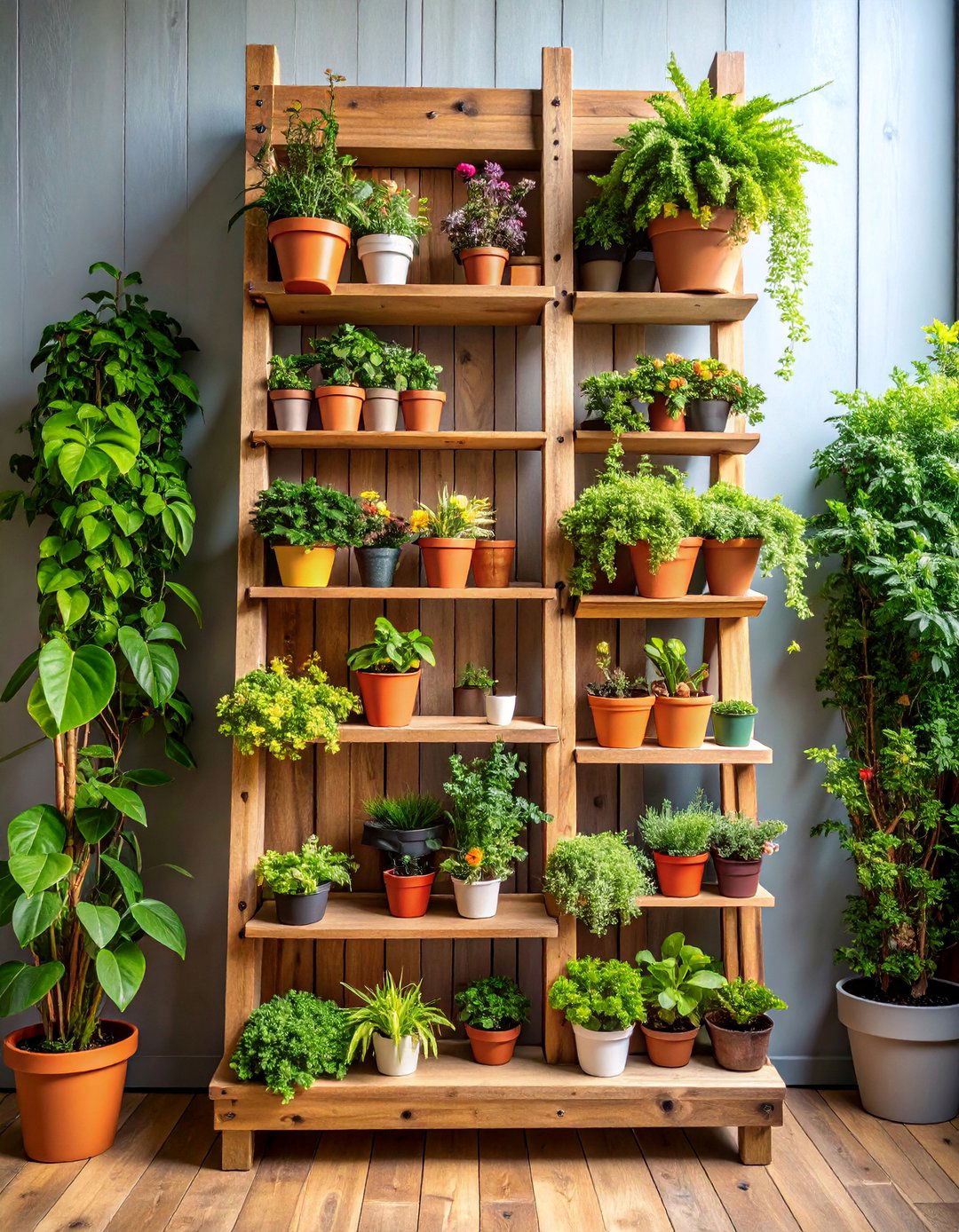
Repurpose wooden ladders into vertical growing systems that maximize space while creating attractive garden features with rustic charm and practical functionality. Ladder rungs support containers at multiple levels while angled positioning provides optimal sun exposure for all plants simultaneously. This space-efficient approach accommodates various container sizes while maintaining easy access for maintenance and harvesting. Lightweight construction enables seasonal repositioning while weather-resistant treatments ensure longevity. Herbs, lettuce, and compact vegetables thrive in this vertical arrangement while creating visually interesting garden displays. This creative recycling demonstrates sustainable gardening practices while providing productive growing space in minimal footprint areas. Ladder gardens suit urban environments perfectly while adding architectural interest to outdoor spaces through innovative vertical growing solutions.
23. Rooftop Container Garden

Transform unused rooftop spaces into productive vegetable gardens through strategic container placement and wind-resistant plant selection that maximizes urban growing potential. Rooftops provide excellent sun exposure while requiring careful attention to wind protection, weight limitations, and watering systems. Large containers with low centers of gravity prevent tipping while wind screens protect delicate plants from harsh conditions. Automatic irrigation systems address increased evaporation rates while thermal protection prevents root zone overheating. This approach maximizes urban food production while creating green spaces that improve building energy efficiency. Lightweight growing mediums reduce structural stress while productive gardens provide fresh food in dense urban environments. Rooftop gardens demonstrate innovative space utilization while contributing to urban sustainability through local food production and green infrastructure development.
24. Community Share Garden Layout
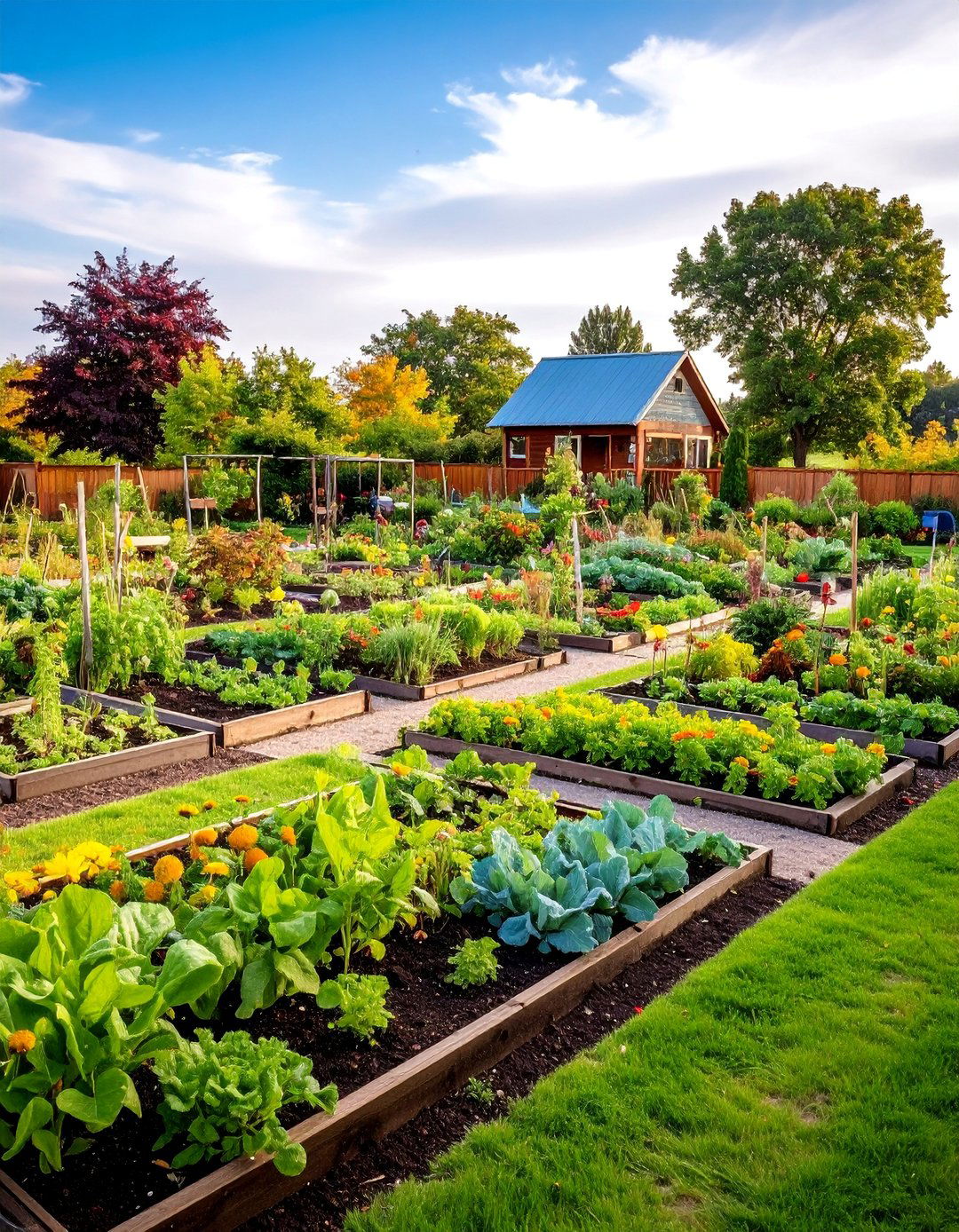
Design collaborative garden spaces that enable neighbors to share resources, knowledge, and harvests while building community connections through shared food production activities. Organized plots accommodate individual preferences while common areas provide shared tools, composting systems, and storage facilities. This approach reduces individual investment requirements while maximizing learning opportunities through experienced gardener mentorship. Diverse cultural backgrounds contribute varied vegetable varieties and growing techniques that enrich community knowledge. Shared harvests reduce waste while ensuring fresh produce availability for all participants. This social approach demonstrates that gardening builds relationships while providing food security benefits. Community gardens create gathering spaces that strengthen neighborhoods while promoting sustainable living practices through collective action and shared responsibility for productive land stewardship.
25. Indoor Hydroponic Garden System
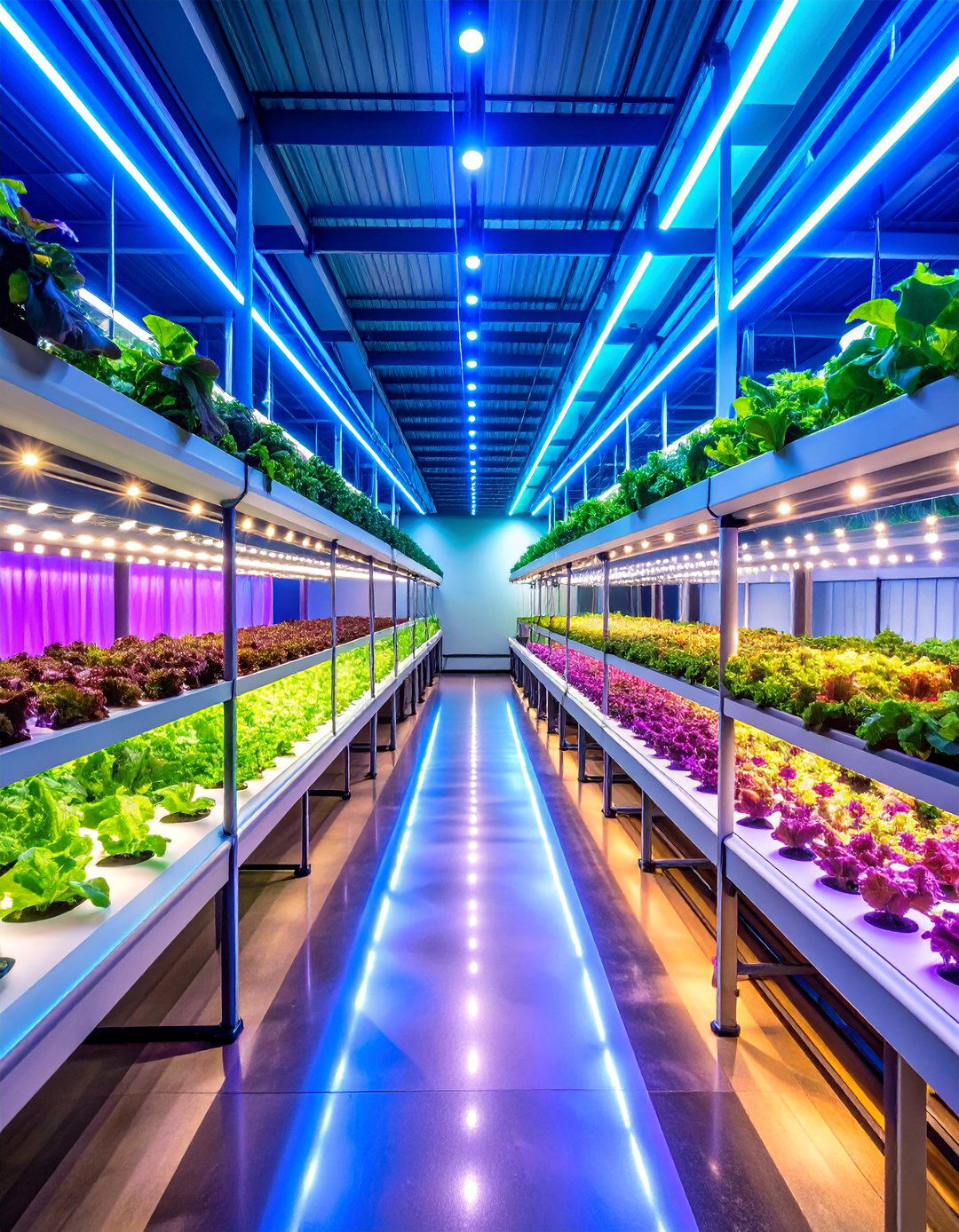
Establish year-round vegetable production through sophisticated indoor growing systems that provide complete environmental control regardless of outdoor weather conditions and seasonal limitations. LED lighting systems provide optimal spectrums for different growth stages while automated nutrients delivery ensures precise plant nutrition. Climate control maintains ideal temperature and humidity while air circulation systems prevent disease issues. This approach enables fresh vegetable production in any location while providing educational opportunities for advanced growing techniques. Compact systems suit apartment living while larger installations support significant food production. Technology integration enables remote monitoring and control while reducing maintenance requirements. Indoor systems demonstrate cutting-edge agricultural methods while providing pesticide-free vegetables year-round, creating sustainable food production that operates independently of external environmental conditions and geographical limitations.
Conclusion:
These diverse vegetable garden ideas demonstrate that productive food growing adapts to any space, budget, or skill level. From simple container arrangements to sophisticated hydroponic systems, each approach offers unique benefits while contributing to sustainable living practices. Success depends on matching garden designs to specific situations, personal preferences, and local growing conditions. Experimentation with different techniques builds gardening confidence while providing fresh, healthy food year-round. Start small, learn continuously, and expand gradually for long-term gardening success and satisfaction.



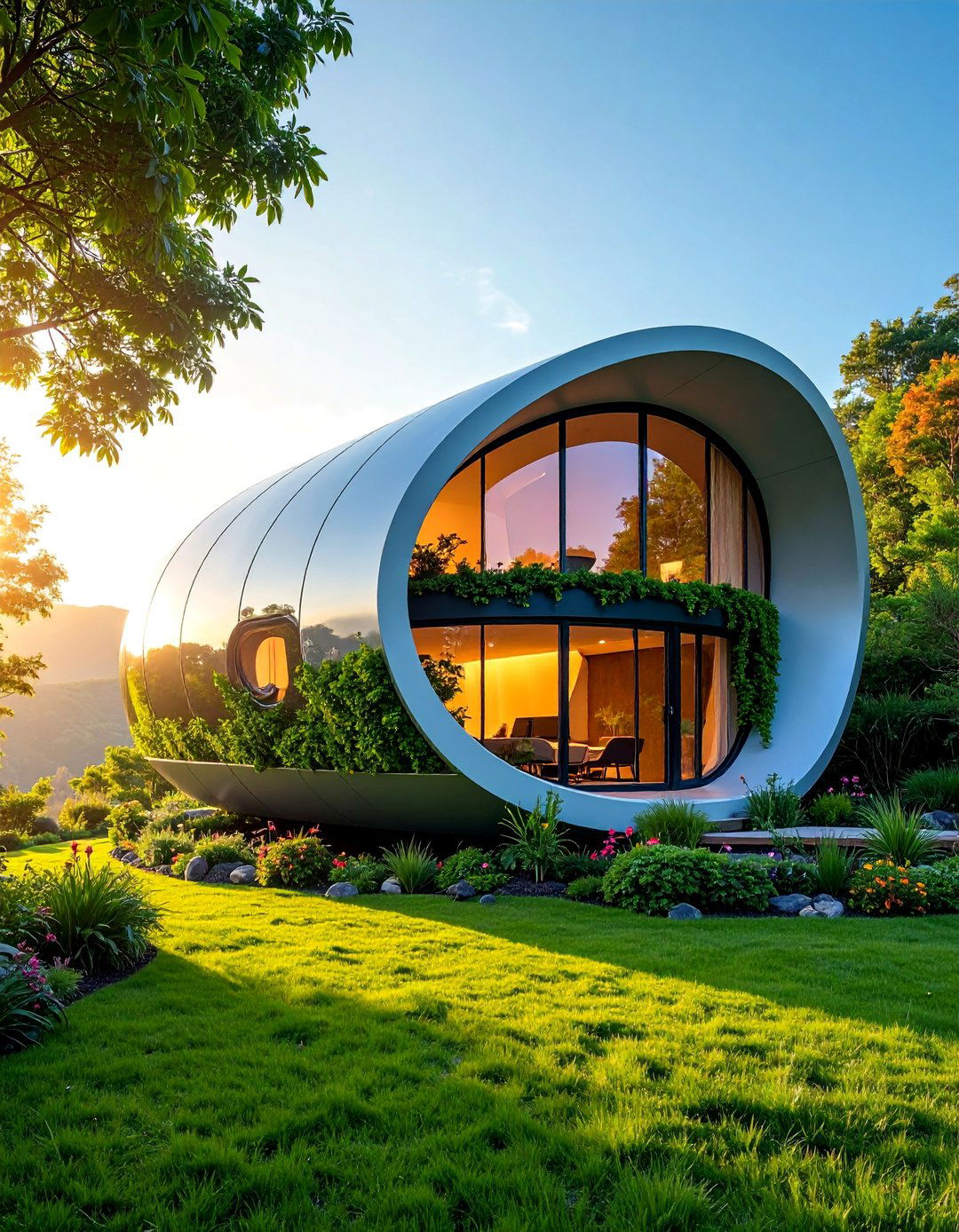
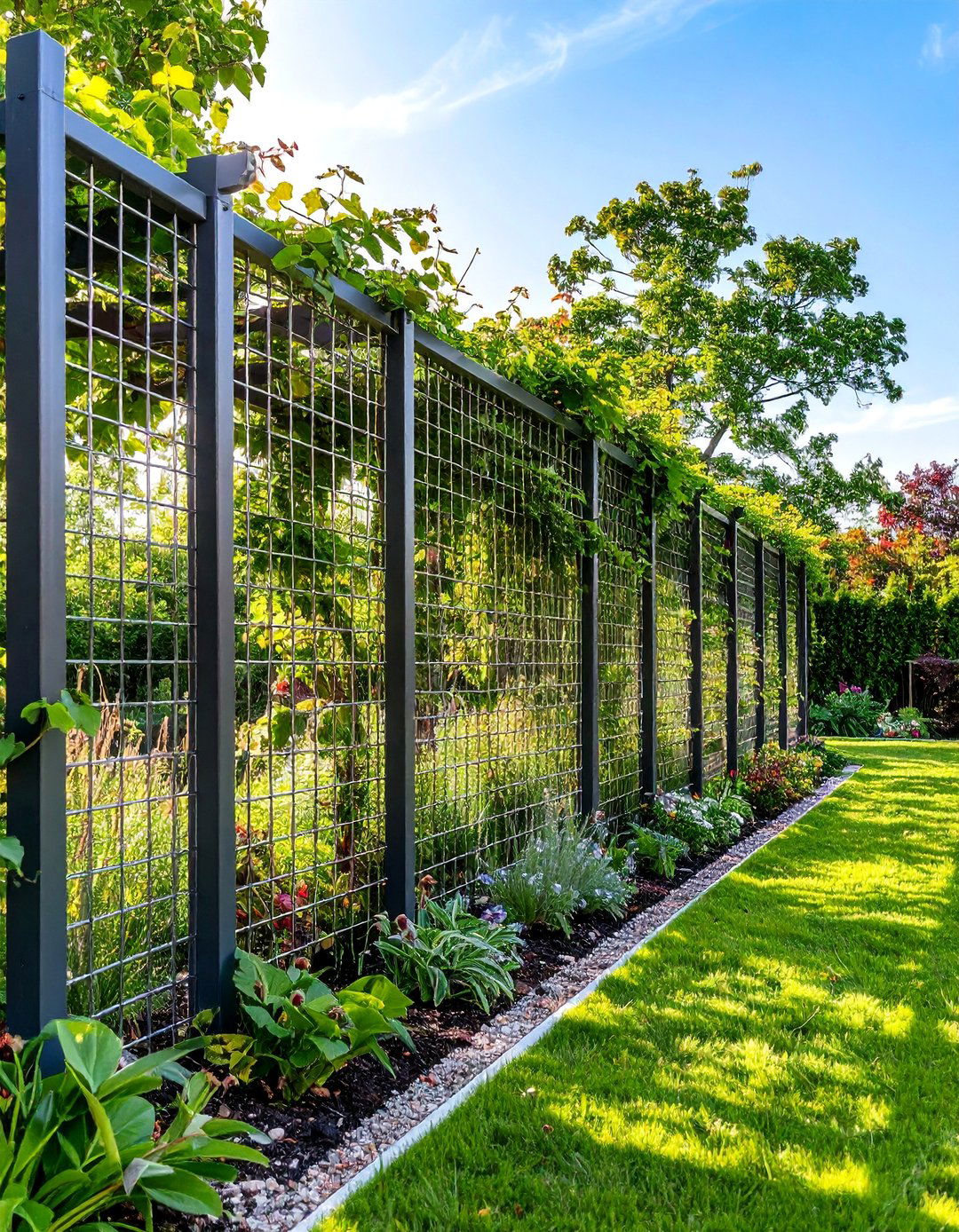

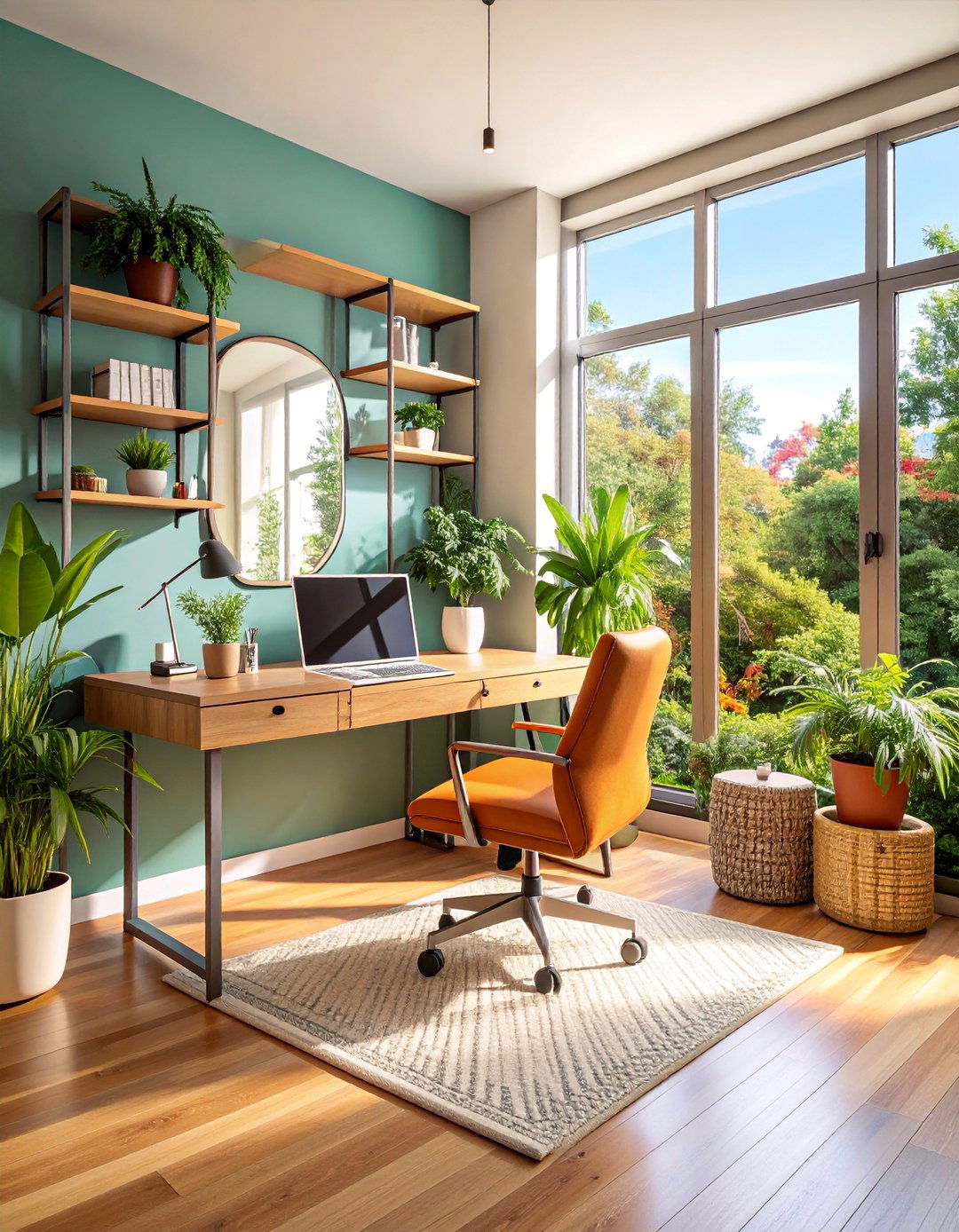


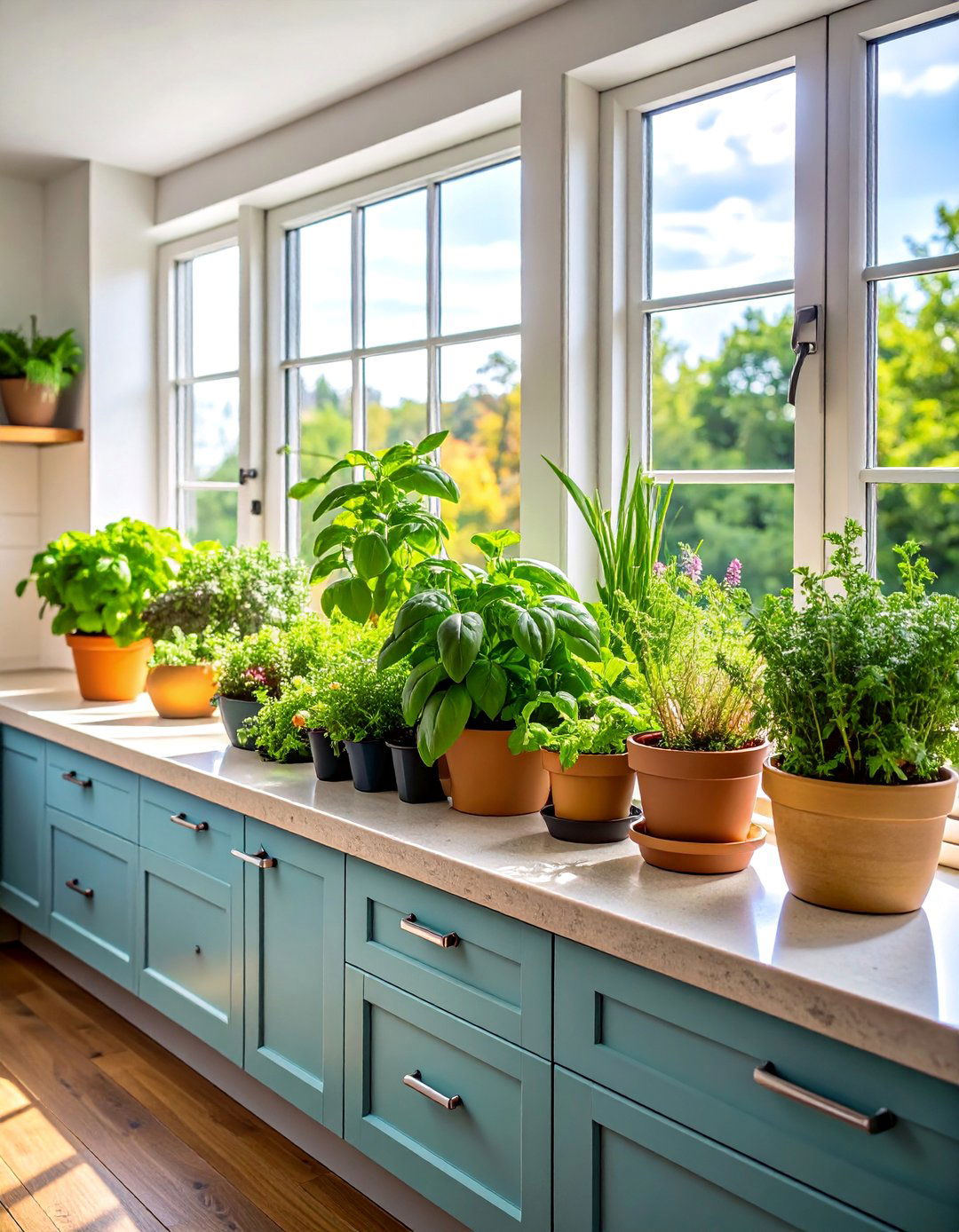







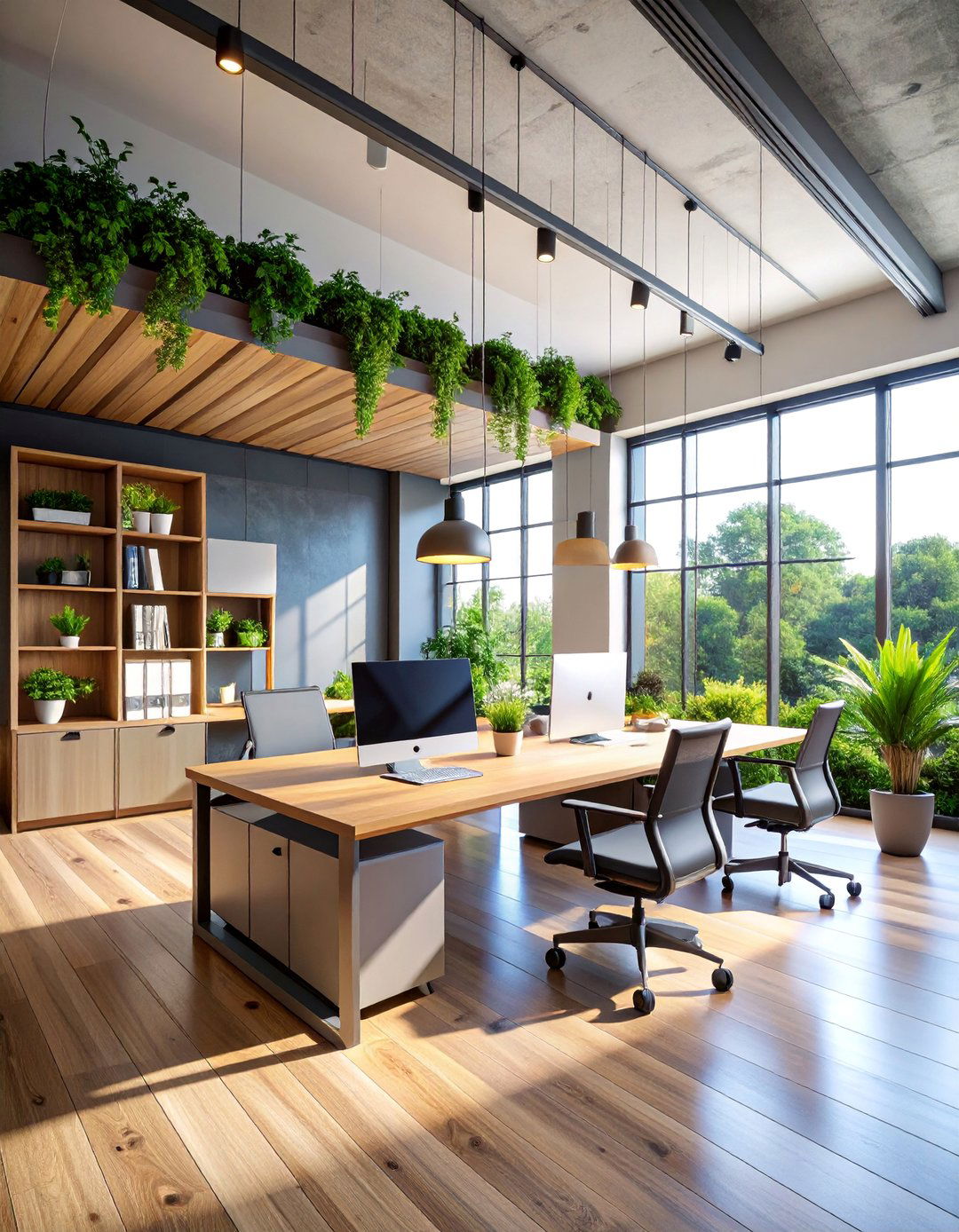
Leave a Reply